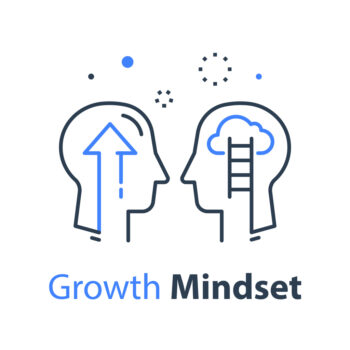By: Tanya Kramer, LPC, LMHC, CADC-I
These days, you can find articles about famous people who have access to a therapist or counselor. The stigma of seeing a therapist or counselor has significantly decreased, and in some places, it’s almost vogue or trendy to have a therapist/counselor (these words will be used interchangeably in this article).
But how does one know if seeking counseling would benefit them? First, you do not need to be suffering from a debilitating mental illness to seek services. You have to want to live the best life you can, and therapy can support you in being your best self and living your best life. Counseling can help people address difficult life challenges and can help people make decisions in their lives that help them live their life to the fullest.
When should I seek counseling?
The American Psychological Association gives recommendations to see a counselor, “if something causes distress and interferes with some part of life”. This association also suggests the following examples when seeking a counselor would be recommended:
- Thinking about or coping with issues which take up at least a half hour each day
- The issue causes embarrassment or makes you want to avoid others
- The issue has caused your quality of life to decrease
- The issue is negatively affecting school, work, or relationships
- You’ve made changes in your life or developed habits to cope with the issue
Sometimes, it can be just as simple as feeling like something is missing or not feeling as happy as you think you could be.
Having someone to listen to you process out loud what is happening in your life and to walk alongside you (metaphorically) by providing support, listening, empathy, psychoeducation, or even brainstorming can feel very comforting as we walk this journey of life that sometimes can feel lonely or limiting.
Working with a therapist offers a space to talk about difficult life challenges regardless of whether it’s something that was in your control or was not in your control. It is a space where you can share your thoughts, feelings, hopes and dreams along with challenges, worries, and difficult decisions you might be facing.
You might consider going to a therapist if you’re dealing with any of the following issues :
- Managing stress
- Difficulty regulating emotions
- Grief / Pain / Sadness
- Life transition
- Identity
- Trauma
- Parenting
- Relationship dynamics
- Changes in family system (divorce, birth of child, adoption, death, separation, etc.)
- Anxiety
- Depression
- Sleep issues
- Mood fluctuations
- COVID impacts
- Family struggles
- Disproportionate, rage, anger, or resentment
- Obsessive thinking or intrusive thoughts
- Overwhelm
- Fatigue
- Apathy
- Stress
- Hopelessness
- Social withdrawal
- Suicidal thinking
- Homicidal thinking
- Self-harm
- Isolating
- Negative thinking patterns
- Eating issues
- Unhealthy coping skills
- Loneliness
- Facing difficult decisions
- Hurt feelings
- Losing interest in things that you used to enjoy
- This is not an exhaustive list!
When to see a counselor if there is not a mental health concern?
You might work with a therapist or counselor to to help you improve your life by doing one of the following things:
- Increase self-awareness of behaviors and patterns
- Improve communication skills
- Start new good habits
- Stop old bad habits
- Learn more about yourself and why you are the way you are
- Learn more about your family of origin
- Re-examine what you think and believe about life in the world
- Identify and reflect on your strengths
- Identify your passions, interests, and what brings you joy
- Structure life to incorporate things that are important to you
- Learn / Practice checking in with your body sensations, emotions, and thought process
- Increase healthy coping skills
- To share your journey through life and process difficult moments
- You want more fulfilling relationships
- You want to improve your health
- Support with reaching goals
- This is not an exhaustive list!
You don’t have to be in crisis to get a counselor. Mental health is a fundamental human right, and according to the World Health Organization, “Everyone whoever and wherever they are, has a deserving and inherent right to the highest attainable standard of mental health.”
Now that I know I want to see a counselor, how do I do it?
- If you have health insurance, the first step is to contact your health insurance provider and get a list of counselors covered by your insurance. Mental health should be included in your health insurance plan.
- Other options for counseling include: using an “Employee Assistance Program” through your work, signing up for online therapy, or contacting the behavioral health department in your local county of residence.
- Filter the list of counselors by gender, schedule, availability, whether they offer telehealth or in-person sessions, and/or what specific therapy modality the therapist uses.
- Look up possible therapists online to learn more about them. A good resource is “Psychology Today” where you can search lots of different therapists using filters.
- Decide on a therapist, contact them to see if they accept your insurance and if they are accepting clients. If they are not accepting clients, you might be able to go on their wait list while checking on other options.
- Some therapists will do a free phone consult to ensure that this therapist and you are a good match.
- Once you have a therapist, you will be scheduled for an intake session, which might include some paperwork to be filled out before or at the first session.
- This first session is an opportunity for your therapist to get to know you and for you to get to know your therapist.
- It is important that you feel safe and comfortable with your therapist. If this is not your experience in the first couple of sessions, then you may want to consider working with a different therapist. There are lots of reasons why one might feel this way, but the most important thing is that you work with a therapist that you feel comfortable with so you can do the kind of work that would best serve you.
- Scheduling sessions either weekly or every other week at minimum is recommended when first working with a new therapist. After the relationship has a trusting foundation and is dependent on your goals, there might be a time when sessions can be more spread out.
- Early in therapy, you can expect to discuss goals for your time together. This way, both your therapist and you will be working toward the same goals.
Most people would benefit from counseling for one reason or another. You are not alone if you think you would benefit from counseling. The National Alliance on mental health (NAMI) has reported in recent statistics that 1 out of 5 American adults live with a mental health condition, and 1 in 20 adults experience a serious mental health condition each year. NAMI reports that only about 40% of people with mental health issues get help, which can result in issues or symptoms getting worse or resulting in other negative effects.
So if you think you could benefit from counseling, try it. If you don’t feel like your needs are getting met by the first therapist you work with, then it is completely appropriate to transition to a different therapist. You want to find a therapist you feel comfortable and safe with so you can trust and lean into this support.
Welcome to the world of Self Care, Self Acceptance, and Living your Best Life!
For more information on this topic, check out these links:
8 signs it is time to see a therapist.
When it’s time to see a therapist.










